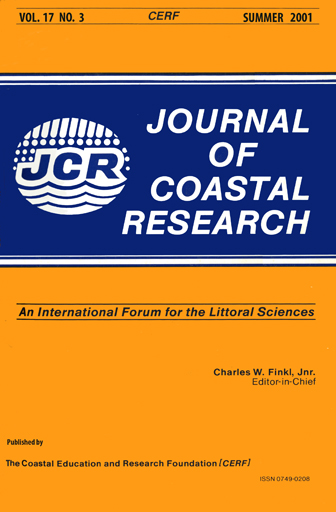Estimating Wave Elevation from Pressure Using Second Order Nonlinear Wave-Wave Interaction Theory with Applications to Hurricane Andrew
Keywords:
Gulf of Mexico, time-series analysis, wave observations, wave tank, pressure gauges.Abstract
We present a methodology to determine the nonlinear relationship between an observed dynamic pressure time series at a fixed point below the surface and the surface elevation. This method extends the formalism of previous studies where the analytical relationship between surface elevation and potential in both unidirectional and directional irregular wave trains has been derived up to second order in wave steepness. Laboratory wave tank tests show that the predicted wave elevation from the nonlinear model is more accurate than the predicted linear surface elevation of a transient irregular wave train, especially for deep troughs and high wave crests. We apply the nonlinear theory of estimate wave elevation of a unique pressure time series recorded at a site 20 km south of Terrebonne Bay, Louisiana, during Hurricane Andrew and compare that result to the wave elevation estimated from the same time series using linear wave theory. The site was within 30 km of the storm's eye at closest approach. The maximum significant wave height using nonlinear wave theory is reduced by 8.4% to 7.69 m. The nonlinear interaction is seen to be strongest during the six-hour period that hurricane force winds were present at the site.Downloads
Published
2001-07-27
Issue
Section
Articles


